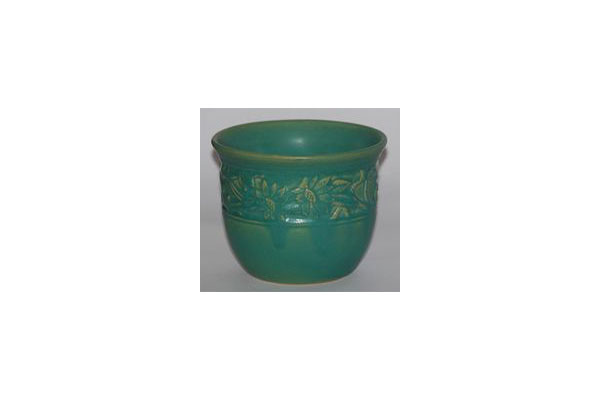In doing a bit of research, mostly because I wanted a definitive idea of when American art pottery  became such a commodity, I discovered the one most significant event that led to its earliest beginnings. That event was the World's Fair, or as it was sometimes called, the Centennial. Held in Philadelphia, there were artists who had already begun to work with clays and glazes. American art potters were especially interested in the French and Japanese wares on display. According to Lucille Henzke's book, Art Pottery of America (1982), there were four artists who were so inspired they chose to pursue art pottery as a way of earning a living. Those artists were T.J. Wheatley, Louise McLaughlin, Nichols Storer and Maria Longsworth.
became such a commodity, I discovered the one most significant event that led to its earliest beginnings. That event was the World's Fair, or as it was sometimes called, the Centennial. Held in Philadelphia, there were artists who had already begun to work with clays and glazes. American art potters were especially interested in the French and Japanese wares on display. According to Lucille Henzke's book, Art Pottery of America (1982), there were four artists who were so inspired they chose to pursue art pottery as a way of earning a living. Those artists were T.J. Wheatley, Louise McLaughlin, Nichols Storer and Maria Longsworth.
Before long, potteries became a part of communities everywhere. People came from around the globe to both study and work in the most successful of pottery companies. Glazes were developed and carefully protected from the competition and formulas were written to ensure consistency from one ware to another.
Around the beginning of World War I, as one might expect, costs skyrocketed for materials required to produce art pottery. Only the most talented and strongest survived. To ensure stability, many potteries began using molds, with individual attention given to each piece during the hand painting efforts of the artists. Since so many art pottery pieces escaped the marking process during this  time, one can't help but wonder if the difficulties the world faced, especially from a financial aspect, had something to do with that.
time, one can't help but wonder if the difficulties the world faced, especially from a financial aspect, had something to do with that.
Still, art pottery developed over the years, each new artist leaving a significant mark along the way. We're left with true works of art to collect, cherish and pass down from one generation to the next. In the process, we wonder who might have held our stunning Roseville vase decades earlier or who might have created the hand painted design on our Weller piece. Time marches on, but anytime we can catch a glimpse into the journey any of our pieces have made, it's always worth a pause in time as we contemplate.
Donna McGill – Just Art Pottery


